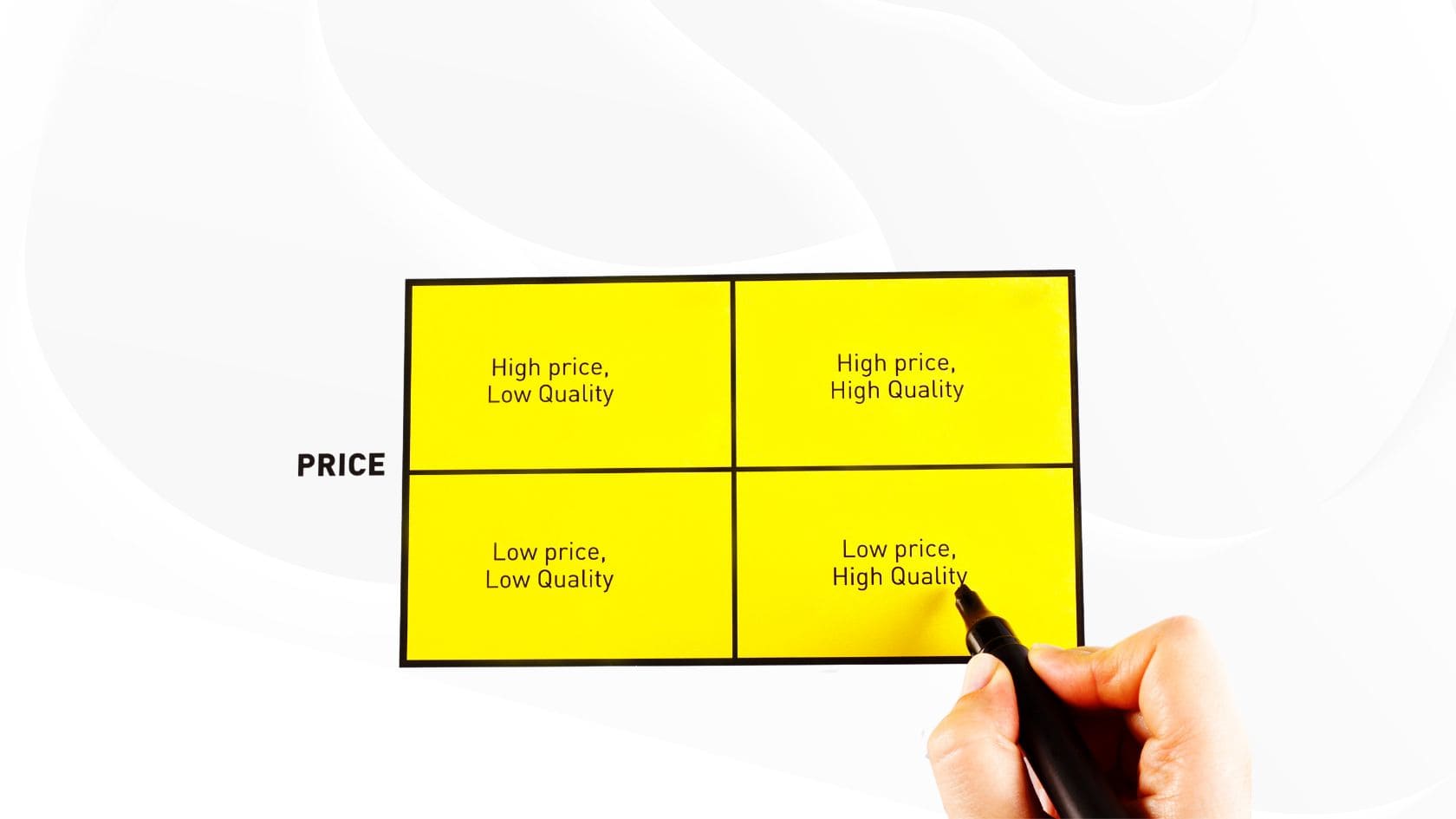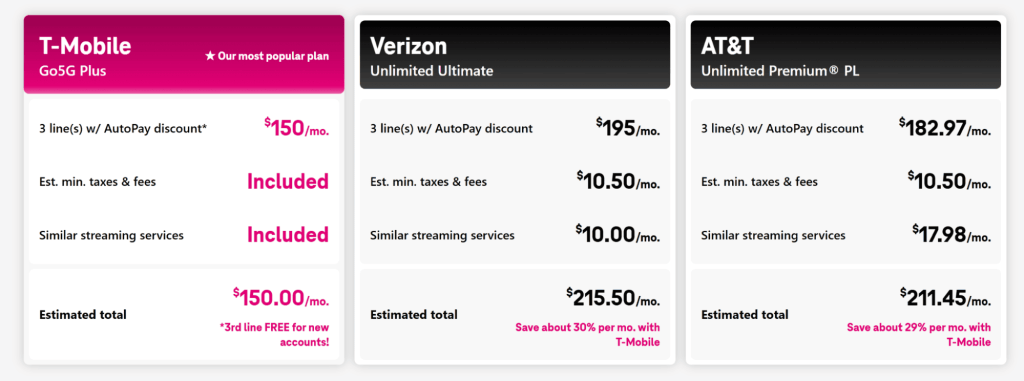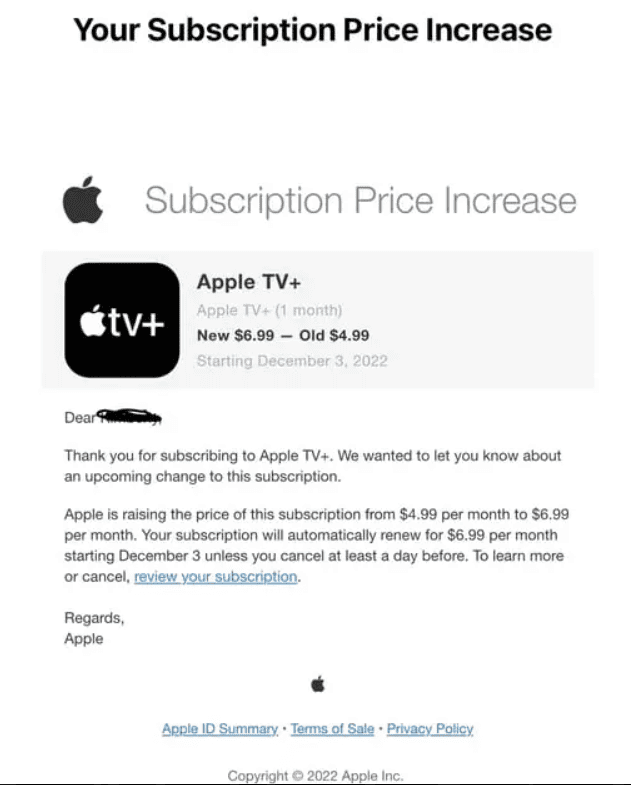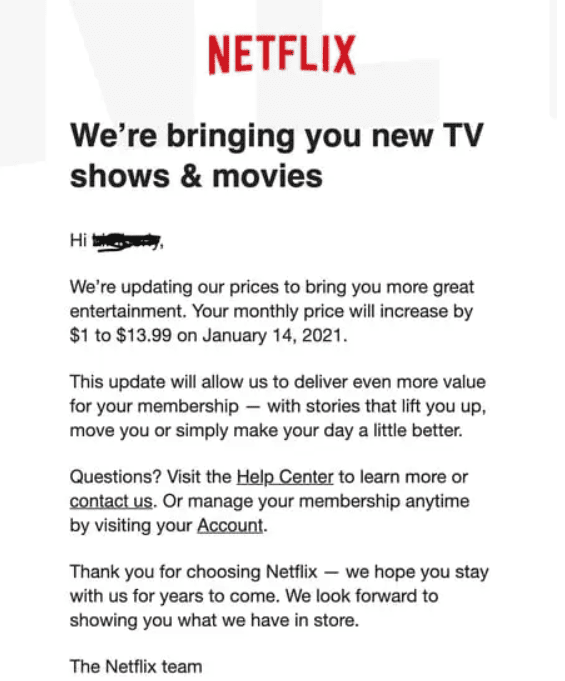
HOW TO RAISE PRICES FOR CUSTOMERS PROPERLY?
The word “cheap” often has a negative connotation and can be off-putting for many people. Not everyone wants to own low-cost products or use services that seem too inexpensive. Yes, people are attracted to sales and special offers, but only when it comes to interesting and quality products. Consumers are willing to pay more for what they genuinely like, but they need a clear explanation for the price increase.
What is this about?
- Why should prices increase?
- Value proposition strategies
- How to write an email or article about price change
- Tips for raising prices
- Conclusions
Why should prices increase?
One of the most significant reasons for raising prices for any business is a decrease in profit margins due to external conditions. Crisis periods, war situations in the country, changes in the currency market—all these and many other factors lead to higher costs of materials and tools, increased operating expenses, and reduced profit.
However, business owners often hesitate to make changes to their price lists, and marketers rarely include this step in their marketing plan. More effort goes into attracting new clients, while in reality, better results can be achieved with the existing customer base simply by reevaluating the product.
A product or service should indeed be viewed from different angles and, first of all, it is important to determine why the offer is valuable and what will prevent consumers from walking away in case of a slight price increase. Knowing the unique selling proposition and the needs of the target audience will help you justify the price increase and show existing clients the logic behind your decision.
Here are some signs that your business is ready for a price increase:
Conversion to purchase exceeds 80%
It may seem like a great indicator, but if you haven’t reviewed your prices for a long time and haven’t considered market changes, occasional customers who rarely buy something might be taking advantage of low-cost offers. Regular clients are unlikely to change their decision if the price of the product becomes slightly higher. Therefore, the higher the demand, the more confidently you can raise the price.
“If your client conversion rate exceeds 80%, your prices are probably too low. Ideally, you want your closing ratio to be in the 75%-80% range. If your conversion rate falls within this range, I recommend reviewing your current prices and making a few necessary increases. If you offer something of high value, your clients are much less price-sensitive.”—“Four Ways To Tell If You’re Ready To Raise Your Pricing“, Allan Dib, Forbes Coaches Council, Councils Member
Customer acquisition cost is too high
If the cost of acquiring each customer was reasonable before but has recently increased, it could be due to higher costs of tools used for business promotion. It could be related to changes in advertising platform algorithms. In this case, you should analyze campaigns and eliminate ineffective sources of client acquisition, or sometimes simply review the price list.
Prices haven’t increased for a long time or ever
If you are selling inexpensive products or offering services at symbolic prices because your target audience cannot pay much, but the product’s popularity remains stable, try making minimal price changes. An additional $1 for a product that costs $10 but is sold to thirty clients per day will bring you $30. Accordingly, the more orders you have, the smaller price changes can be profitable for the business.
You are ahead of competitors, and your prices are the same
Perhaps your competitors do not care about product packaging, but you do it with taste and personalization. If it is a public place, the business can stand out against the background of competitors through decor, music, or even lighting. The main thing is that this factor is truly important and valuable to the clients.
You are growing as a specialist
Investments in education, such as professional development, online courses, and offline events, should pay off. A specialist can easily prove their level by, for example, posting scanned certificates and diplomas, photos from professional events, on their website or social media page.
The company or specialist has extensive experience
Even if you haven’t recently attended any courses, the level of professionalism increases with practice. This is confirmed by case studies, media publications, expert blog articles, portfolios, client reviews, and the overall volume and content of user-generated content.
No matter how logical the reasons for raising prices are, justifying this process is almost always challenging. You should expect not only positive or neutral reactions from customers. And if you’ve never heard the question “Why is it so expensive?” from clients, your prices are likely too low.
At every stage of business growth, you must decide what is more important for you right now: increasing revenue or keeping every single customer satisfied.
“The best approach your team can take is to assure clients that the price increase will help maintain the quality of products. Clients who depend on your products will be more understanding of this reasoning and will want you to maintain the high quality they are accustomed to.”—“How to Let Customers Know About a Price Increase (Without Making Them Mad)“, Swetha Amaresan
Very often, the reason for the price increase is a change in the company’s positioning (targeting a more solvent target audience) or increased costs for production and distribution of products, or the preparation processes for providing services, renting premises, utilities, training. Material costs include rising prices for materials, changes related to quality improvement, new equipment, or software. It is also important to consider industry trends, which can be identified through competitor analysis.
Before making a final decision on raising prices, inform all team members, prepare instructions for staff, and think about how exactly you will notify your audience.
📌 Read the article: How to Create a Unique Selling Proposition (USP)
Value proposition strategies
David Ogilvy, a well-known American advertiser and copywriter, once said: “The higher the price, the more desirable the product becomes in the eyes of the buyer.” This rule does not always apply, especially when it comes to regular customers who are used to old, rarely changing prices. However, a business owner or marketer can ensure that the customer does not feel the urge to switch to a cheaper alternative. The key is to shift the target audience’s attention from the price to the value.
Let’s explore the most effective strategies for shaping value propositions in the minds of consumers.
Not expenses, but investments
To make a buyer feel comfortable spending money, you should demonstrate the financial effectiveness of investing in a certain product or service. Many people associate purchasing with expenses, and expensive decisions with an empty wallet and fear of poverty.
The task of the marketer and business owner is to change these associations and focus on a positive outcome. For example, a training course may be expensive, but it can help a person refine their professional skills so effectively that within a month, the cost of the course will pay off, and within two months, the profit will double. A one-time investment will lead to an improved quality of life, making the price a relative concept.
The same applies to products. For instance, when offering a working mother with multiple children a kitchen appliance, it’s more important to emphasize how much time she can save for herself, her family, or her job rather than focusing on technical specifications. You can also share culinary ideas that she can implement using the appliance, thereby creating gourmet meals at home and saving a specific amount of money.
It’s even easier to prove the financial effectiveness of outsourced services. If a business owner delegates marketing and advertising to an agency, they can achieve desired results faster, while saving on the cost of in-house specialists, training, and software
By demonstrating the effectiveness of investments and calculating the payback period, the price will be seen in a different light by potential customers.
Guarantee—financial and beyond
First and foremost, don’t forget about the “14-day rule,” which is a standard consumer protection norm. If you extend this period by twice or even three times, new customers’ trust will increase. It’s also worth emphasizing the option to exchange the product for another one.
Services are more complicated, but you can guarantee results and offer free solutions in case of any issues. For a beauty salon, it might be a free repair of a broken nail or a manicure correction. If it’s about hotel or restaurant services, and a customer is dissatisfied (too noisy, dirty, etc.), you can offer a free stay or a complimentary meal.
The main goal is to assure the customer that everything will be perfect, and if not, the company will address the issue—they will get their money back or receive other beneficial offers.
Consider offering not only material guarantees but also a promise of satisfaction. For some industries, this may be a secondary criterion, but such pleasant bonuses can distinguish a business from competitors. For an auto service, it might be a café and a secured parking lot; for a private clinic—a children’s play area and a mini-library.
If you conduct consultations or training, highlight your teaching style and friendly atmosphere. These aspects should be supported by specific examples (“We enjoy cappuccinos during lessons and champagne at graduation”) or customer testimonials.
Decoding the price
In many service sectors, the customer doesn’t know what’s included in the service. To prove that the price is fair, you need to explain all the stages of service delivery, such as website development or creating a house design project.
This strategy is effectively used by law firms, advertising agencies, and private medical centers. The latter provide their patients with lists of services included in costly and comprehensive packages, such as pregnancy care. You can also point out how much time and effort a future mother would have spent if she went through all the examinations and tests in a public hospital.
Comparison
Comparison can be made based on price, time savings, quality, and satisfaction level. The only thing to avoid is openly criticizing competitors by naming them, as this approach is unprofessional and off-putting.
A notable example of comparing service conditions with well-known market competitors is T-Mobile. They highlight the key financial terms that matter to customers in a clear and structured way.

Price breakdown into small parts
Online stores offer installment payments or credit for expensive products. If it’s a service, break down each step of service delivery and show the savings for ordering a full package. You can also split the price by days if the service is provided over a certain period. For example: “The course costs $192,70, just $12 per week for personal guidance by a curator and community access.”
USP and emotions
In some industries, logical arguments won’t have as much impact on customers as emotions. Parents looking for the best private kindergarten in the city for their child are unlikely to focus on saving money. They aren’t comparing the facility to budget kindergartens. Breaking down the price into parts won’t impress them, as they already pay monthly for the service.
The only thing that can secure customer loyalty in such cases is the promise of unique experiences backed by proof and a distinctive offer. If the kindergarten follows the Montessori method and the educators take responsibility for the child’s positive attitude and comfort, parents will feel responsible and caring, leading them to choose this option.
How to write an email or article about price change
Preparing to inform clients about a price increase can cause business owners anxiety. However, if you manage to properly frame the message and notify the target audience in advance, the negative reaction will be minimal. Keep in mind, though, that some backlash from a portion of the customer base is still likely.
When writing a price increase email, follow these guidelines:
Be specific and concise
Communicate the important information at the beginning of the message. Clearly state what the new prices will be and when they will take effect. Outline any steps clients can take before that date to save money. Offer a few options and a consultation for additional questions.
A good example of a brief and clear email is Apple’s notification about the Apple TV+ subscription price increase from $4.99 to $6.99. The platform gave customers a few weeks to decide whether to continue or cancel the subscription.

Show empathy
Put yourself in the customer’s shoes and think about how you would like to receive news of this kind. A good example of an email can be seen from Netflix. The company sent a message to its subscribers in advance, reminding them of the value of its services.
“This update will allow us to bring even more value to your subscription—with stories that will lift your spirits, touch your heart, or simply make your day a little better”, the message said. This effectively sums up why customers should stay with the company despite the price increase.
The tone of Netflix’s message is warm and friendly, yet still professional. To keep customers engaged, the email included a list of new releases and top movies.

📌 Read the article: How to Respond to Customer Feedback
Do not apologize
Apologizing will make the reader think that you are not confident in your decision, which can increase dissatisfaction. A clear explanation of the reasons for such changes is enough.
Send follow-up messages
Emails can easily end up in spam or the promotions folder. It’s a good idea to send a follow-up message before the price increase takes effect. This will serve as a reminder for those recipients who may have forgotten about the update and missed out on the special offers before the price increase.
It’s important to maintain the right tone when communicating with customers. Above, we used two email screenshots—examples from HubSpot. On the company’s website, you can download many email templates, including those related to price increases. However, such templates should be adapted to fit your business and the needs of your target audience.
Email marketing isn’t the only channel for informing customers about price updates. Large companies often publish press releases on various industry platforms in the case of significant changes.
Tips for raising prices
You can significantly improve customer response to price increases by considering a few key aspects of the price change process and how you communicate the news. Here are some tips on how to raise prices without harming your business.
- Announce the price increase in advance and clearly explain the reasons.
Most internet and TV service providers clearly and concisely explain the reasons for price increases, such as rising operating costs or improved service speeds. Often, subscribers are given the option to keep their current rate for a certain period or to use the new maximum plan for free for a few months.
Allow customers to ask additional questions
Ensure that customers have the opportunity to connect with a specialist to ask questions and clarify details related to price increases.
Inform the staff
Before sending out notifications about price increases, make sure the staff is already informed. This will help prevent misunderstandings when customers contact managers and other staff members.
Set prices slightly below round numbers
This doesn’t always work, but if the previous price was $7,25 and the planned increase is $2,40, setting the new price at $9,40 may appear less drastic than $9,65.
Choose the right time for changes
Adjusting prices to benefit the business should be done when you are not facing major issues with orders or customer loyalty.
“The best time to raise prices is when your customers are the most satisfied with your product or service. If you plan to increase prices, be especially diligent in proving your value beforehand.”—Rieva Lesonsky, “12 Ways to Raise Prices Without Ticking Off Your Customers”
Reduce the size
This tip is not suitable for every situation. If you run a restaurant or sell sweets or tea by weight, one option for a less noticeable price increase is to reduce the portion size or packaging while keeping the price the same.
Add fees
If the increase in product or service costs is beyond your control, consider adding temporary fees (such as for rent or utilities). This approach is likely to be accepted only by regular and loyal customers.
Improve the product
If the quality of your product or service has increased, clearly describe it and prove it. You may not change the product itself, but you can create new attractive packaging or add a small “compliment” for customers, like a pleasant surprise.
Bundle services
This works well for businesses with subscriptions or ongoing services. Create attractive and valuable service bundles while increasing the price of individual products.
Always plan for price increases
To avoid frequent price changes, approach it strategically by considering all potential risks, conversion rates, the competitive environment, and external factors. You might need to set a higher price than originally planned.
If you need to raise prices sharply, consider finding a new, wealthier customer base. Expanding your target market to include higher-income clients or businesses with larger budgets can be a smart move that not only increases profit but also allows for business growth.
Conclusions
Raising prices is a natural part of business that, under certain circumstances, can even create higher demand. However, keep in mind that such changes will likely trigger a negative reaction from some of your target audience. Be prepared for this and focus on communicating effectively with customers.
Consumers do not expect product prices to remain unchanged forever. Even if your competitors’ prices are stable, periodically assess your customer acquisition costs and adjust your pricing strategy accordingly. A price increase is a critical step that can be challenging for your audience but should always align with the scaling of your business. Consider all factors such as product improvements, staff training, and rising costs of essential business tools, and don’t be afraid to implement changes.
Frequently Asked Questions
It is very important to inform clients about price increases clearly. This can be done through email and SMS notifications, combined with press releases published on various platforms, along with updates on the official website and social media.
Service prices can and should be reviewed and increased from time to time. However, it is important not to engage in “price wars” with competitors, maintain service quality, and notify clients about changes in advance.
To write about raising service prices, prepare a list of reasons for the price changes. Be clear and concise, do not apologize, but show empathy.
To explain a price increase to a client, clearly state why it is happening and what changes they can expect in the product or service. The most logical reasons for consumers include maintaining or improving product quality due to rising operational costs and higher material prices.
